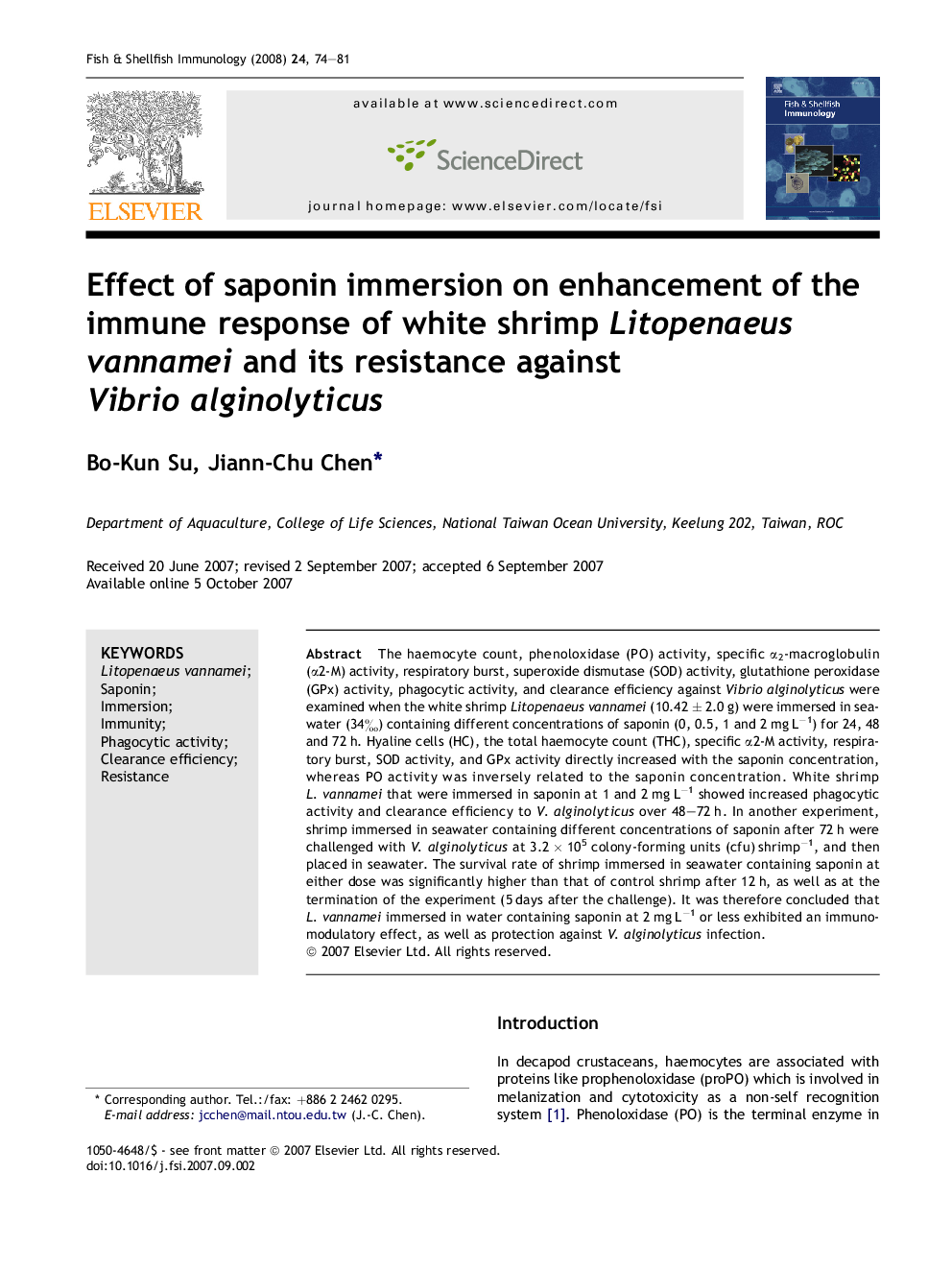| Article ID | Journal | Published Year | Pages | File Type |
|---|---|---|---|---|
| 2433375 | Fish & Shellfish Immunology | 2008 | 8 Pages |
The haemocyte count, phenoloxidase (PO) activity, specific α2-macroglobulin (α2-M) activity, respiratory burst, superoxide dismutase (SOD) activity, glutathione peroxidase (GPx) activity, phagocytic activity, and clearance efficiency against Vibrio alginolyticus were examined when the white shrimp Litopenaeus vannamei (10.42 ± 2.0 g) were immersed in seawater (34‰) containing different concentrations of saponin (0, 0.5, 1 and 2 mg L−1) for 24, 48 and 72 h. Hyaline cells (HC), the total haemocyte count (THC), specific α2-M activity, respiratory burst, SOD activity, and GPx activity directly increased with the saponin concentration, whereas PO activity was inversely related to the saponin concentration. White shrimp L. vannamei that were immersed in saponin at 1 and 2 mg L−1 showed increased phagocytic activity and clearance efficiency to V. alginolyticus over 48–72 h. In another experiment, shrimp immersed in seawater containing different concentrations of saponin after 72 h were challenged with V. alginolyticus at 3.2 × 105 colony-forming units (cfu) shrimp−1, and then placed in seawater. The survival rate of shrimp immersed in seawater containing saponin at either dose was significantly higher than that of control shrimp after 12 h, as well as at the termination of the experiment (5 days after the challenge). It was therefore concluded that L. vannamei immersed in water containing saponin at 2 mg L−1 or less exhibited an immunomodulatory effect, as well as protection against V. alginolyticus infection.
